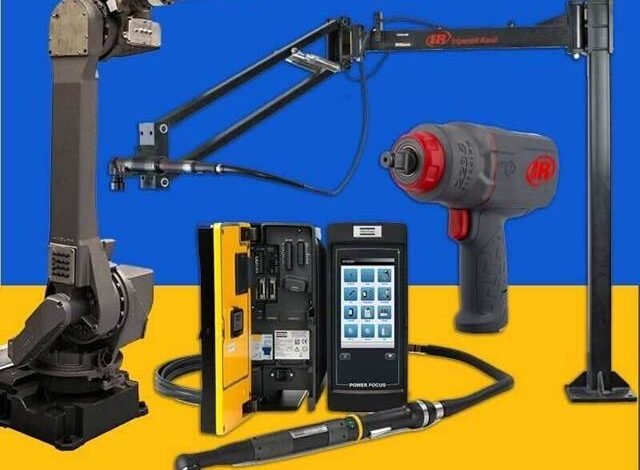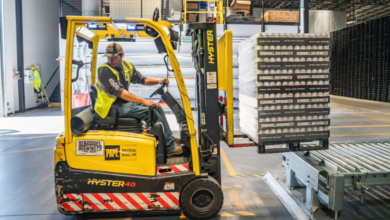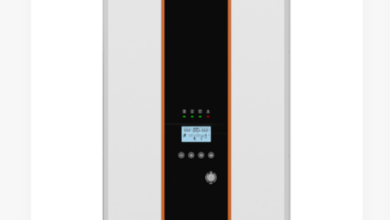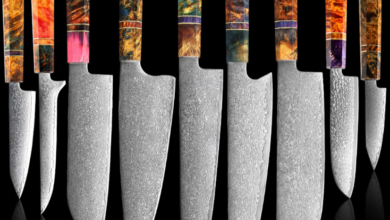Comparing Cordless Impact Wrenches and Traditional Impact Wrenches

You face tight deadlines and heavy demands on every job site. A reliable impact wrench can make or break your day. You need fast bolt removal and precise torque on assembly work. Two main tool types compete for your attention: cordless impact wrenches and traditional (air-powered) impact wrenches. Each tool style brings its own strengths and trade-offs. You might lean toward a battery-driven model for its freedom on site. Or you might stay loyal to a pneumatic gun that never runs out of juice when you feed it compressed air. Before you decide, weigh how each one handles torque output, runtime, weight, maintenance and cost. You’ll find clear guidance below. It will steer you toward the right choice for your fleet.
How Impact Wrenches Produce Torque
Impact Mechanism
Impact wrenches deliver high twist force in bursts rather than a steady turn. A hammer mass inside the tool spins freely around the anvil. When that mass contacts the anvil it transfers energy in a sudden shock. That shock raises torque far above what a straight electric motor or air motor can hold at low speed. The result is fast bolt break-loose or torque-down performance that a standard drill or ratchet cannot match.
Power Source
Two common drives power that hammer test:
- Electric motor plus battery
A brushless motor spins the hammer via a gearbox. A lithium-ion cell delivers energy. - Air motor plus compressor
Compressed air spins the hammer assembly. An external compressor feeds air through a hose.
Each drive type shapes tool feel, output curve and service demands. A quick look at both styles shows how they differ in actual use.
See also: Tech Businesses Are Investing Billions on
Cordless Impact Wrench: Key Traits
A battery-driven impact wrench drops the air hose and the need for a compressor. It runs on rechargeable lithium-ion cells that sit inside the handle or behind the motor. Modern brushless models deliver torque comparable to small pneumatic tools. Power and runtime hinge on battery size and efficiency.
Benefits
- Portability
No hose to trip over or track into tight spots. You wander freely around farm machinery, underbridges or remote sites. - Quick setup
Pull the tool from its case, snap in a charged pack, and start work. No wait for a compressor to spool up. - Less noise
A battery-powered motor runs quieter than a high-pressure air motor and compressor combo. - Advanced controls
Many models include torque presets, speed modes and LED lights. A dial lets you dial in removal speed, medium torque and full-power nut drive.
Drawbacks
- Pack swaps
A fresh battery runs out after a dozen heavy-duty bolts. You need a stack of spares or a field charger. - Weight
A lithium-ion pack adds bulk behind the motor. A top-heavy feel can tire your wrist on long runs. - Heat limits
A motor can slow down once the pack drops below a certain voltage under heavy load. You may see a small dip in output as the motor cuts power to protect cells. - Initial cost
High-end cordless models and a charger plus multiple packs often cost more up front than a basic pneumatic setup.
Traditional Impact Wrench: Key Traits
Pneumatic impact wrenches trace back decades on service trucks, auto shops and factory floors. They draw air from a compressor, push it through an air motor and spin the hammer. They feel light in hand. A small pistol-grip model can weigh under 3 pounds yet deliver 250 Nm of torque. The lack of a battery keeps bulk to a minimum.
Benefits
- Endless runtime
As long as your compressor runs you stay on the job. No battery change-out or recharge moments. - Lower tool cost
A basic pneumatic hammer sells for a fraction of a brushless cordless model. - Lighter grip
No internal battery means lower weight at the business end. You fight less fatigue when you clear lug nuts all day. - Simple design
An air motor has few electronic parts to fail. If seal or bearing wear occurs you swap in a new kit with basic shop skills.
Drawbacks
- Compressor need
You must install a reliable air system on site. A portable gasoline-driven compressor can fill in but adds noise and fumes. - Hose management
A 25-meter hose lets you roam but needs care. Abrasions or kinks kill airflow and torque. - Noise and vibration
A running compressor plus an air gun spikes noise levels in a shop. You need hearing protection and regular maintenance on the compressor. - Pressure drop issues
Long runs of hose or small-bore lines cause a drop in air pressure. You lose torque if the supply falls below 90 psi under load.
Performance in the Field
Break-Loose Power
When you face a rusted wheel nut on a semi-tractor, you need high break-loose torque. A pneumatic model with 600 Nm peak easily cracks a frozen stud. Yet a top-rated cordless gun with 650 Nm rival that brute force. In many real jobs you won’t see a difference between both when you match peak output ratings.
Speed of Cycle
Count how many impacts per minute each tool delivers. A faster cycle rate means you spin a nut off in fewer seconds. Cordless hammers now hit 4,200 impacts per minute. That rate rivals many shop air guns. Traditional models top out at 3,700 ppm but still move bolts swiftly due to higher sustained power under load.
Heat Management
Under continuous torque-down on a production line a gun can heat up. Cordless tools sense high motor temp and cut power to protect cells. A pneumatic wrench gains no such limit. It runs until you shut the air valve. That trait makes it ideal on long assembly runs where you never pause. Meanwhile a battery pack stays cooler but work cycles may slow as cell voltage drops under heavy use.
Ergonomic Fit
A lighter head equals less wrist strain. Pneumatic models often use composite housings to shave weight. Cordless drivers bulk up near their handle. You choose a short-head model if reach matters. If you need wrist relief look for side-handle or pillow-grip adapters. Also compare vibration levels. Each maker lists impulse variation in m/s². Lower numbers mean more comfort.
Maintenance and Service
Both tool types need routine care to stay reliable. Here’s a quick care plan:
Cordless Wrench Care
- Clean vents and housing after each shift.
- Store packs at room temperature.
- Cycle cells once per month to prevent deep-discharge lockout.
- Inspect brushes or motor sensors per maker guide.
- Check fasteners on gearbox housing every 200 hours of use.
Pneumatic Wrench Care
- Oil tool daily with a few drops of pneumatic tool oil on the inlet.
- Drain water from the compressor tank each day.
- Replace inline filter element once per quarter.
- Inspect air hose for cracks or bulges weekly.
- Grease hammer mechanism per maker interval.
A single ignored step can cut tool life. A nozzle clog on an air gun drops torque by 20 percent in minutes. A neglected battery pack rack can lose 10 percent capacity in a month.
Safety and Control
You need a secure grip and clear line of sight on every fastener. Both tool types carry torque reaction when the hammer snaps. A sudden twist on your wrist may lead to strain injury.
- Trigger feel
Look for a ramp-up trigger that lets you start slow then ramp to full power. That control helps on smaller bolts. - Brake system
Some models stop rotation the instant you release the trigger. That quick-stop brake cuts over-run and helps you set final torque. - Torque preset
Advanced cordless models let you choose a target torque and shut off when it hits that mark. Pneumatic guns need an inline impact control or a separate torque limiter for that level of control. - Vibration reduction
An anti-vibe handle or internal mount can lower vibration by up to 50 percent. That drop leads to less fatigue over long runs.
Cost and Return on Investment
A quick estimate helps plan your budget. Consider tool cost, energy cost, maintenance and downtime.
- Tool purchase
Cordless: USD 300–600 per unit (plus battery and charger)
Pneumatic: USD 100–250 per unit (plus hose and fittings) - Operating cost
Cordless: electric charge on a 20 V pack runs about USD 0.02 per cycle
Pneumatic: air cost on a 5 hp compressor runs USD 0.05–0.10 per cycle - Maintenance cost
Cordless: battery replacement after 3 years; motor overhaul after 2,000 hours
Pneumatic: seal kits every 1,000 hours; compressor service every 500 hours - Downtime risk
Cordless: pack swap time on busy days
Pneumatic: compressor failure shuts down all air-driven tools
Calculate total cost of ownership by multiplying daily cycles by cost per cycle over expected tool life. You may find a cordless fleet cheaper if staff work across multiple sites with no fixed air line. A shop with 20 air nuts may see a pneumatic gun pay off in lower energy bills and fewer pack swaps.
Why Choose Flexible Assembly Systems?
Flexible Assembly Systems stands ready to equip your fleet with both cordless and pneumatic impact wrenches. We work with leading brands to match each tool’s output curve to your torque requirements. Our techs set up test benches on site so you confirm torque over break-loosening work. You get a custom maintenance plan that covers batteries, chargers, hose kits and compressor checks. Each battery pack we sell carries a two-year performance guarantee. Our pneumatic wrenches come with an air-flow audit that sets your compressor for max output and energy efficiency. You receive starter kits that include all necessary fittings, filters and a service schedule you can link to your daily work order system. We guide your team through tool handling best practice and torque-control method. That support helps you hit production targets without scrap or torque error.
Making Your Choice
Your next step depends on your work style:
- If you roam across large sites with no air line run a cordless kit. Stock at least two chargers and five packs per gun.
- If you run a fixed shop with high-volume bolt work set up a central compressor. Place hose reels at convenient stations and supply each gun with inline oil.
- If you need precise torque on delicate parts add a torque limiter to your pneumatic gun or choose a cordless model with torque presets in small-nut mode.
- If you juggle both scenarios keep one cordless gun per crew and one air gun per station. Train your staff on both tool types so they know which one suits each task.
Final Word
A cordless impact wrench grants freedom and modern controls. A pneumatic model offers endless runtime and lighter weight. Both tool types can deliver similar peak torque and cycle speed. You win when you select each tool for the right application and keep it tuned. A solid care plan preserves output. A safety brief prevents torque overshoot and wrist injury. You measure tool cost across purchase, maintenance and energy use. Then you pick the tool that fits your workflow and budget. With the right match you lock bolts fast, keep teams happy and ship quality builds every time.



